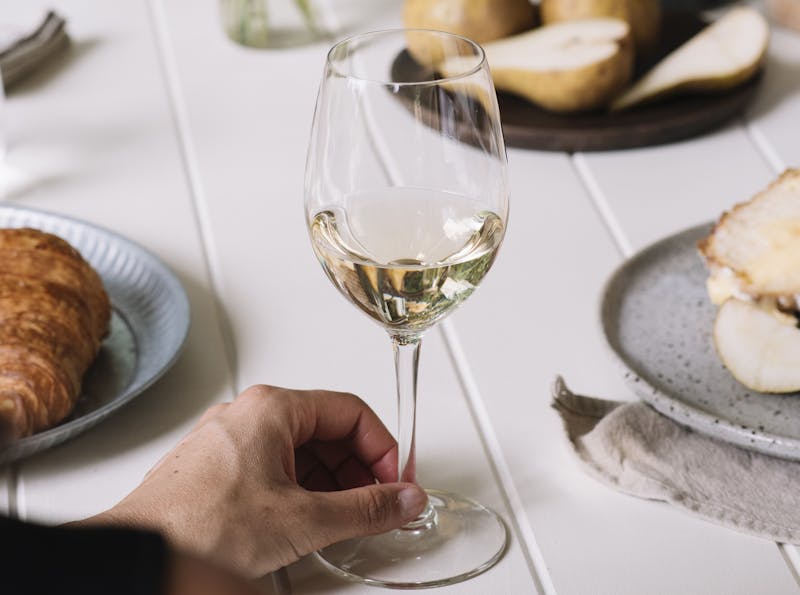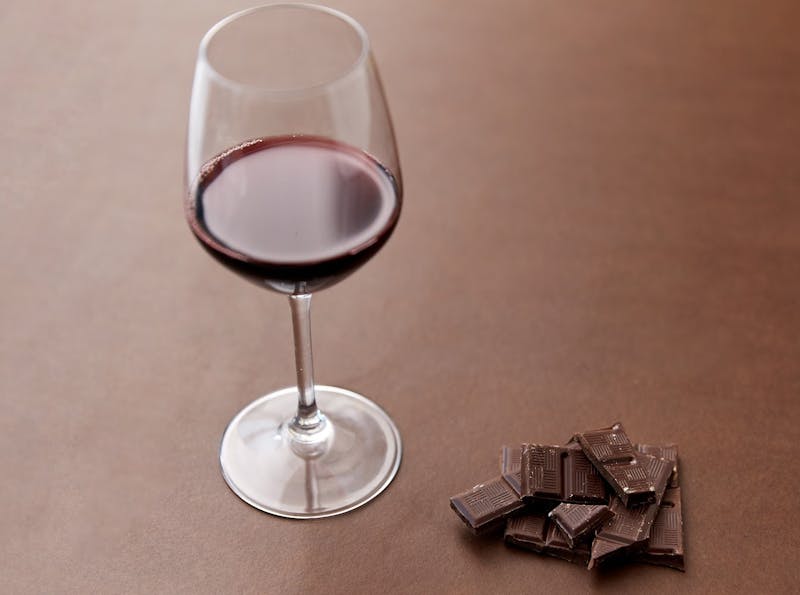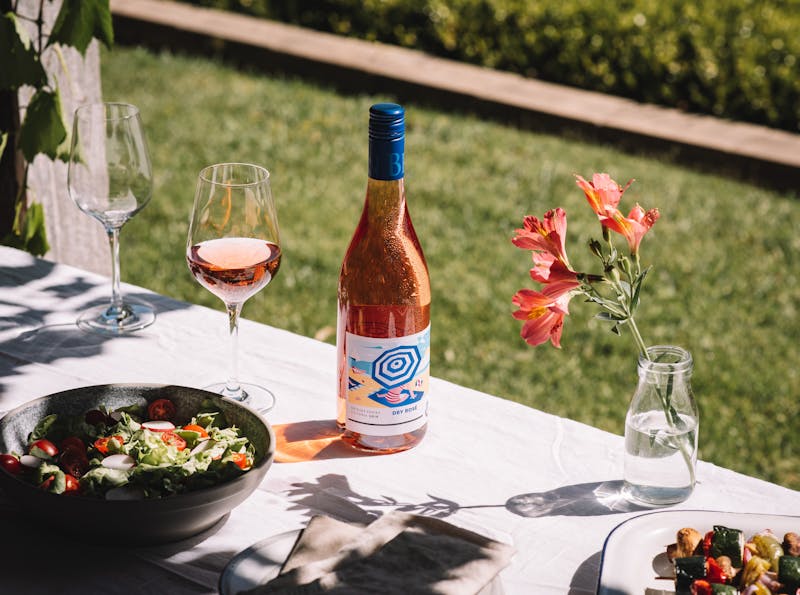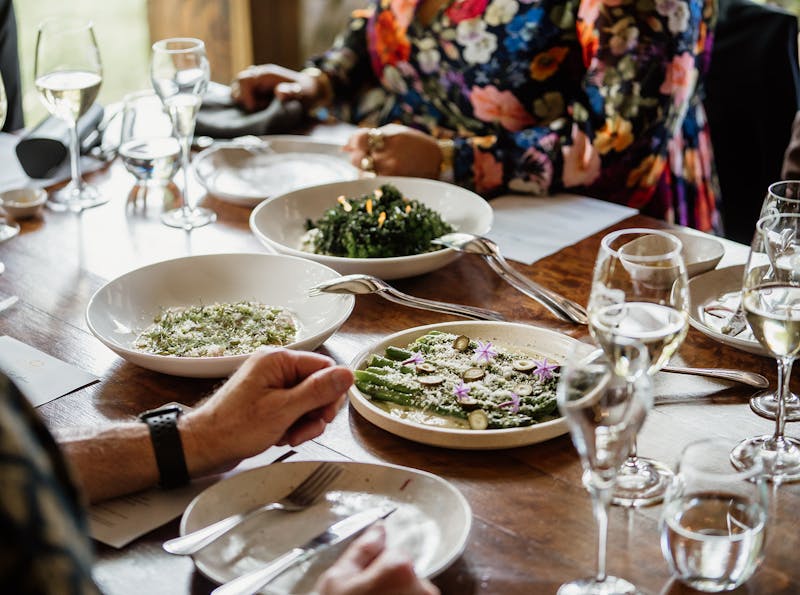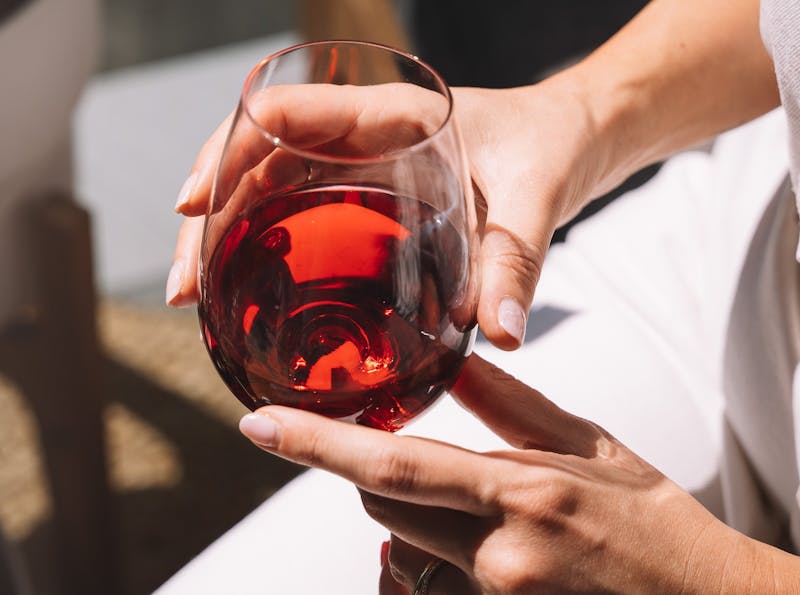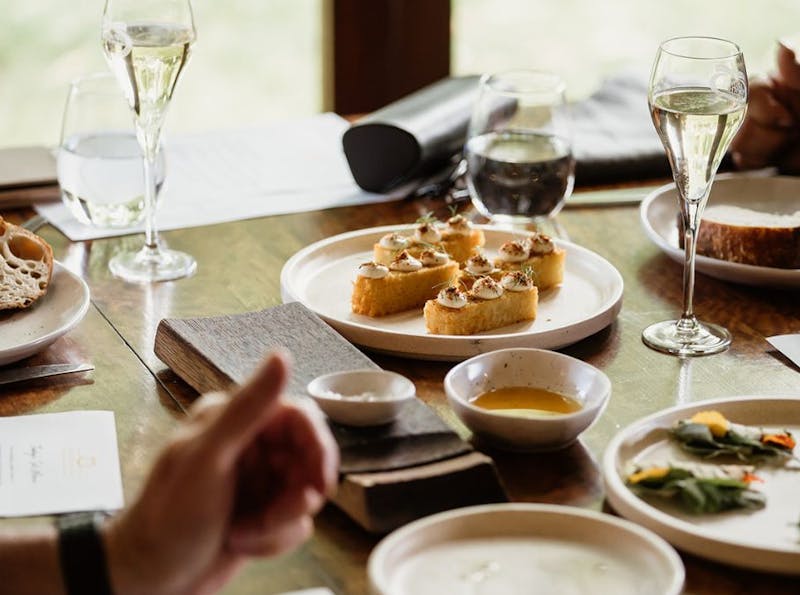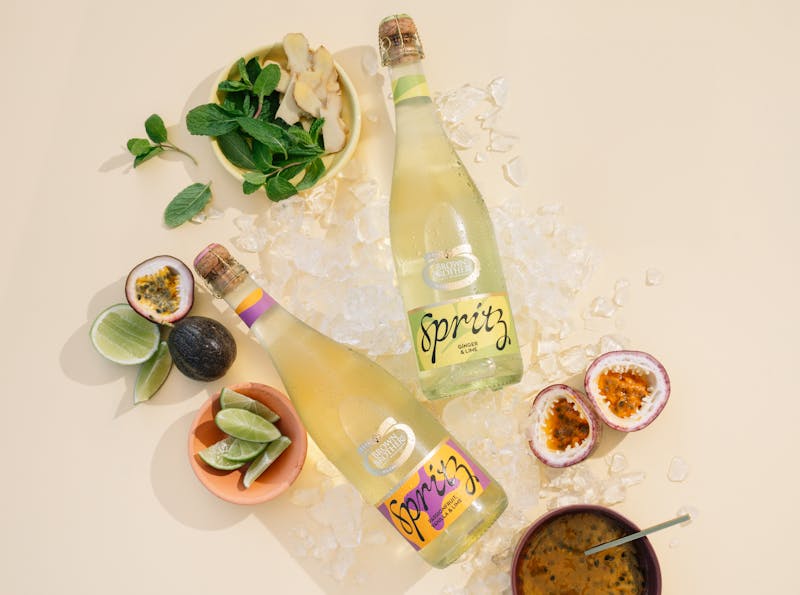Wine Education
10 fun facts about Chardonnay to whet your whistle
Fri 24 May 2024
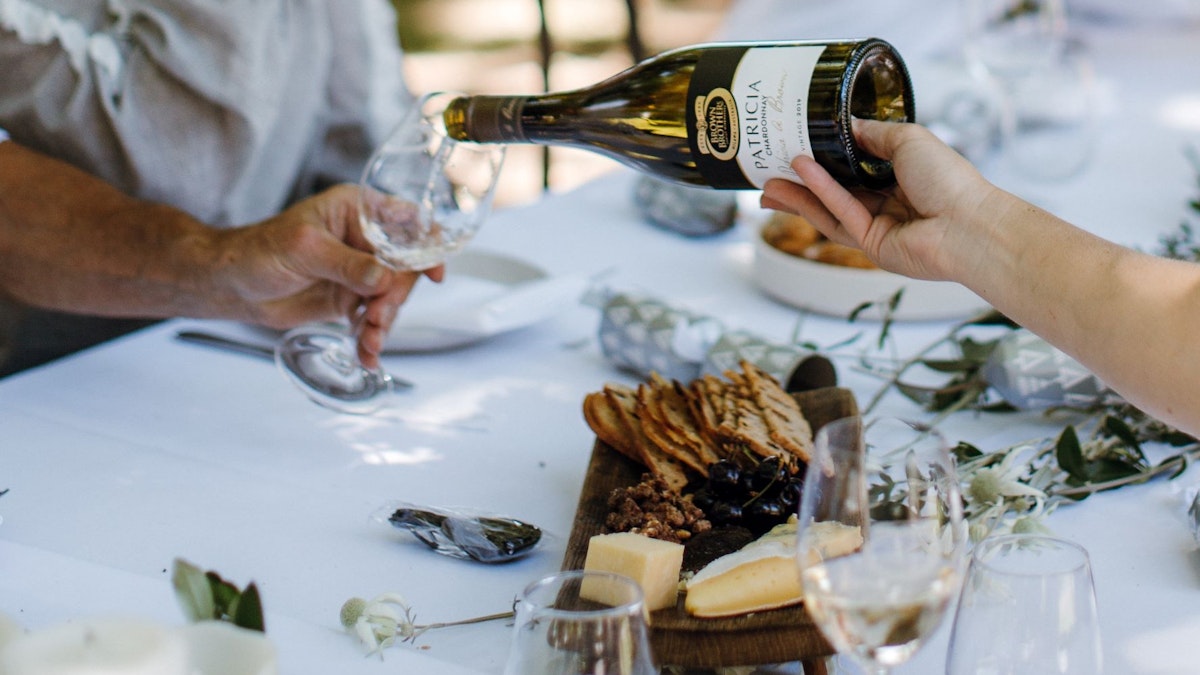
Forgive us for stating the obvious, but isn’t Chardonnay delicious? We sure think so.
In honour of this universal truth, we’ve popped together a list of fun facts about white wine Chardonnay. These liquid lovelies are perfect for diving into that metaphorical oak barrel, emerging mere minutes later breathless with knowledge.
So go on, immerse yourself. Because thirst is the absolute worst.
1. Chardonnay originated in France
Like many wonderful wines that were born in France, Chardonnay was first produced in the French Burgundy region. The Mâconnais region in southern Burgundy is in fact home to a tiny village called Chardonnay, with a purported (and highly endearing) 199 residents.
Today, Chardonnay has spread to all corners of the globe, from Australia to California and from New Zealand to South Africa.
2. The Chardonnay grape is bland, though the wine is anything but
We say this with love: the Chardonnay grape has a neutral flavour and relies on terroir and the winemaking process to add flavour. But while the grape itself may be a tad on the dull side, Chardonnay (the white wine) is anything but.
So just what does Chardonnay taste like? The answer depends on where the grapes were grown and how they were handled in the winery. It’s also important to consider whether the wine has undergone malolactic fermentation, which adds savoury notes of butter and vanilla.
Even within Australia, there are marked differences between climate and the Chardonnay these vineyards produce. Warmer sites in Victoria and South Australia display more stone fruit and even tropical fruit characters, while cooler sites such as Tasmania produce leaner Chardonnay with greater acid and notes of slate and flint.
Stone flavours in wine, we hear you ask? Prepare to have your palate rocked.
3. Same grape, different styles: Introducing Old World and New World Chardonnay
New and old, old and new, round the world... What on earth’s the diff between Old and New World Chardonnay – and in fact Old and New World wine? Quite a lot, actually.
Old World wine regions like France and Italy are the places where modern wine was born. Countries that produce New World wine – from Australia to South Africa and from Asia to the US – have taken these traditions not as gospel but as inspiration to innovate and sometimes bend the rules.
Broadly speaking, Old World Chardonnay is grown in cooler climates (think the Champagne region in France or chilly Tasmania), producing leaner wines whose fruit flavours take a backseat to high acidity and pronounced minerality. New World Chardonnay is largely produced in warmer climates such as South Australia and California, leading to more fruit-forward white wines with lower acidity, higher alcohol and a fuller body.
Now you know.
4. Not all oak barrels were created equal
Oak is oak is oak, right? Wrong! The two main types of oak barrels used for fermenting Chardonnay come either from France or the US. French oak barrels are more highly sought after and thus more expensive, producing wines with a beautiful elegance and subtle flavours of nuts and spice. American oak is more robust (ahem), resulting in Chardonnay with distinct tropical fruit and smoky aromas.
To complicate matters somewhat, there’s also new oak and old oak to consider. New oak barrels lend a more oaky flavour to the wine, producing flavours that range from spice to smoke via warm vanilla. As oak barrels age, they impart less flavour. But they’re far from redundant. Old oak adds texture to a wine and allows it to breathe during ferment.
So next time you hear a wine geek blathering on about oak barrels, casually ask whether they’re referring to French or American oak – and for that matter old or new oak. Guaranteed brownie points headed your way.
5. Let's hear it for easygoing, adaptable Chardonnay
You know that friend who pivots on a dime and never complains – and does it with a smile? Meet your new bestie, Chardonnay. Known for being easy to cultivate and thriving happily in many different conditions, the Chardonnay grape buds early and often. In fact, it can often be a little too eager, producing leaves with such reckless abandon they require vigorous pruning.
6. Chardonnay is one of the grapes allowed in Champagne
Remember that little-known sparkling wine, Champagne? Said no one ever. Typically, three grapes are used to create this famously festive French sparkling: Chardonnay, Pinot Noir and Pinot Meunier. Blanc de Blanc Champagne – that delightful aperitif whose crisp apple notes and lingering acidity dance on the tongue – is made exclusively from Chardonnay grapes.
But here’s a little-known fact. The French Appellation d'Origine Contrôlée (AOC) permits four other grape varieties in Champagne: Pinot Gris, Arbane, Petit Meslier and Pinot Blanc.
Now there's a fun piece of trivia.
7. Let's not speak of the 90s ABC movement
No, we’re not referring to Alec Baldwin’s immortal line in Glengarry Glen Ross: Always. Be. Closing. In the world of wine, ABC refers to a trend first identified in 1995, ‘Anything But Chardonnay’.
After enjoying huge popularity in the 1980s, Chardonnay fell firmly out of favour around the world. Punters turned more towards red wines, or lighter, less oaky whites such as Pinot Grigio. Chardonnay also became a scapegoat for the globalisation of wine, seen to be shafting the little guy in ways that enraged many.
Thankfully, in 2024 Chardonnay has been restored to its rightful glory. And more power to it.
8. When it comes to food pairings, Chardonnay adores the colour white
Thirst and hunger visit us all. So next time you’re looking to crack open a bottle of Chardonnay and match it with food, remember these handy tips.
When it comes to food pairings, Chardonnay is especially fond of the colour white – think chicken, turkey and white fish. Add in a splash of cream to really make that protein sing. Shellfish is also a delight with Chardonnay, while white chocolate is another winner.
Of course, given the broad spectrum of Chardonnay produced around the world, different flavour profiles work better with different foods. Aged Chardonnays can pair beautifully with savoury, earthy dishes such as ripe cheese or buttery pasta, while younger, leaner styles lean favourably towards Asian or even tomato dishes.
9. Chardonnay ages like a dream
Should you age Chardonnay? That'd be a hells yes – especially premium Chardonnay with pronounced acid and structure. Some White Burgundies can be aged for up to 20 years, producing deeply golden white wines so haunting and rich they inspire poetry.
Go on, pen a cheeky haiku...
10. Chardonnay is generally more expensive than other white wines
Chardonnay is a tad pricier than some other white wines – and with good reason. Unlike say the Moscato grape, which produces large fruit and plenty of it, Chardonnay grapes can produce very low yields, especially in cool climates. Chardonnay also requires longer time in barrel than many other white wines, as well as hands-on winemaking including lees stirring (known as bâtonnage in the wine world).
Of course, as with any wine, premium wines demand a premium price. But savour a lovingly-crafted bottle of Chardonnay and you’ll soon see that those extra pennies were well worth it.
11. BONUS FUN FACT
Hip hip hooray – May 25 is International Chardonnay Day!
We’re celebrating with a bottle of outstanding Chardonnay, of course. Perhaps Brown Brothers’ lauded Patricia Chardonnay, or Devil’s Corner ridiculously good-value Resolution Chardonnay. Shop our full range of Chardonnay here.
So pick your poison! We’ll be there with you in spirit.




